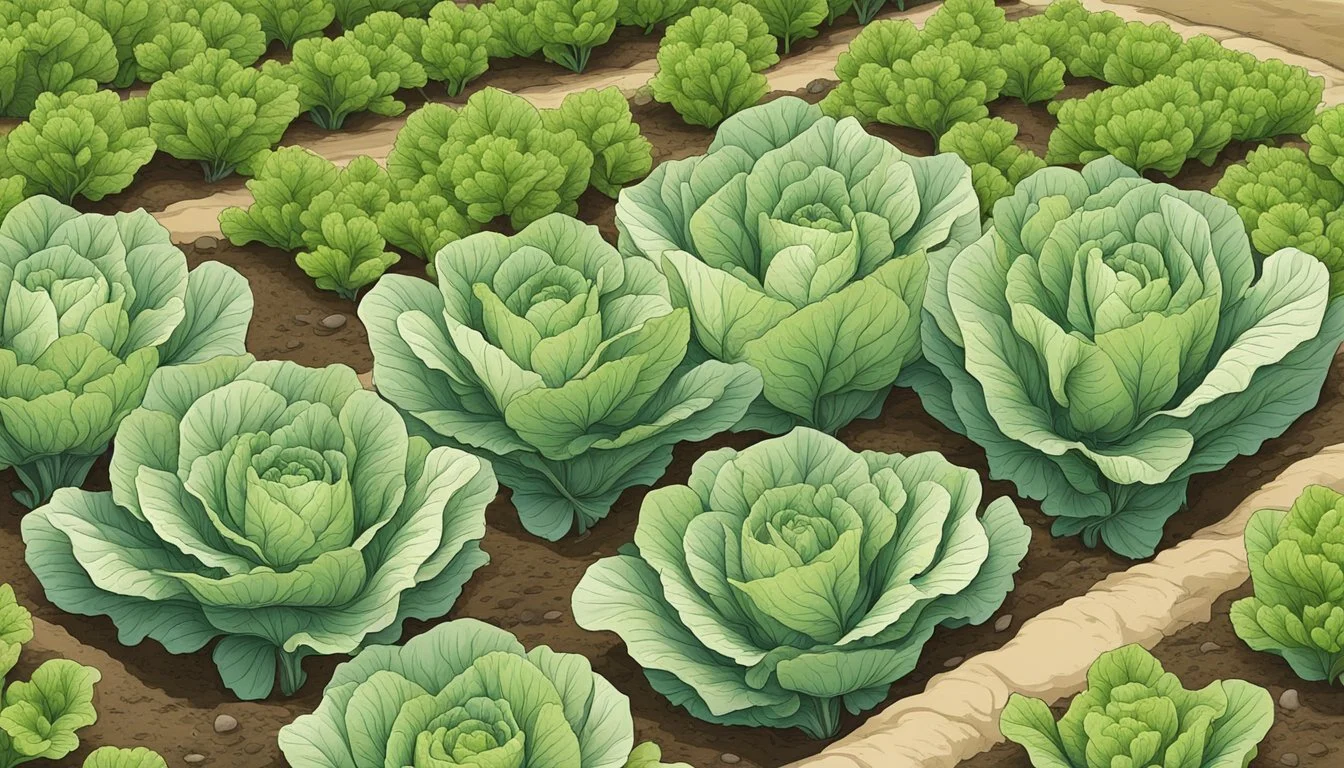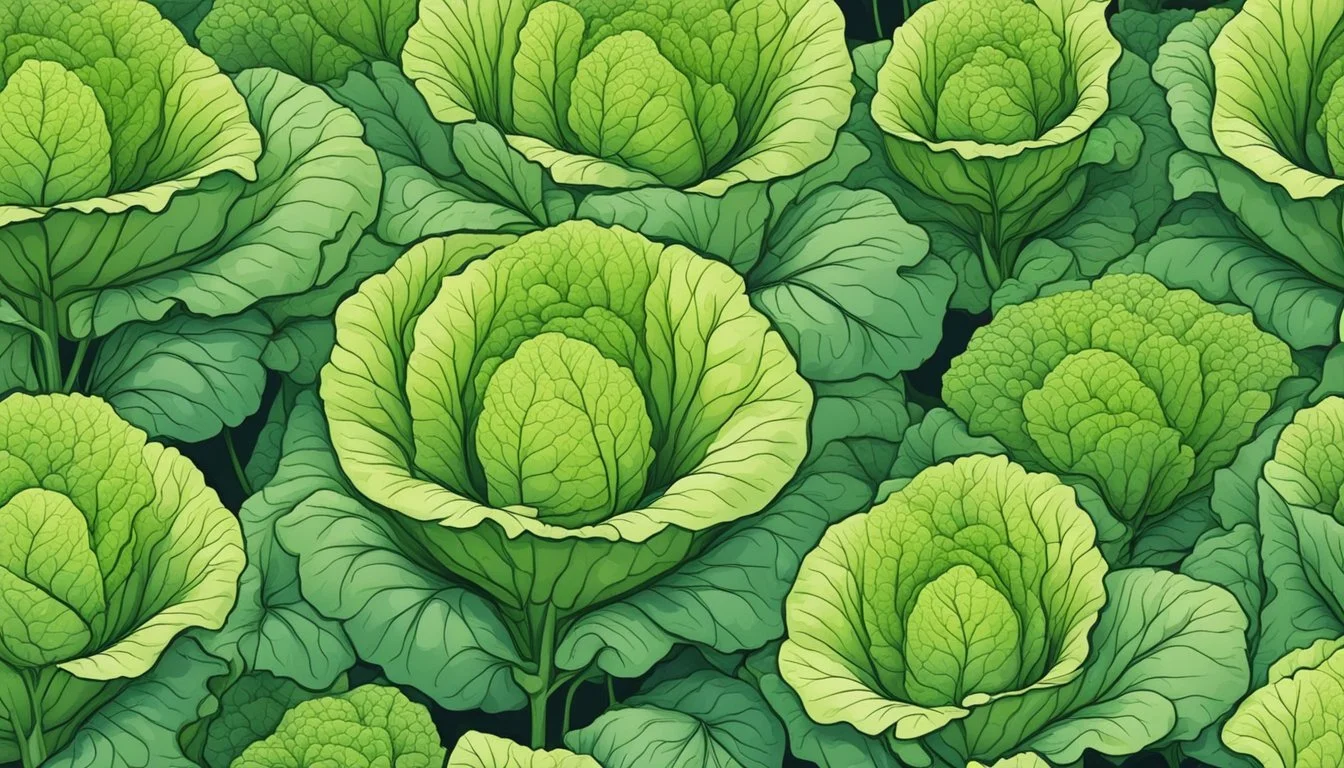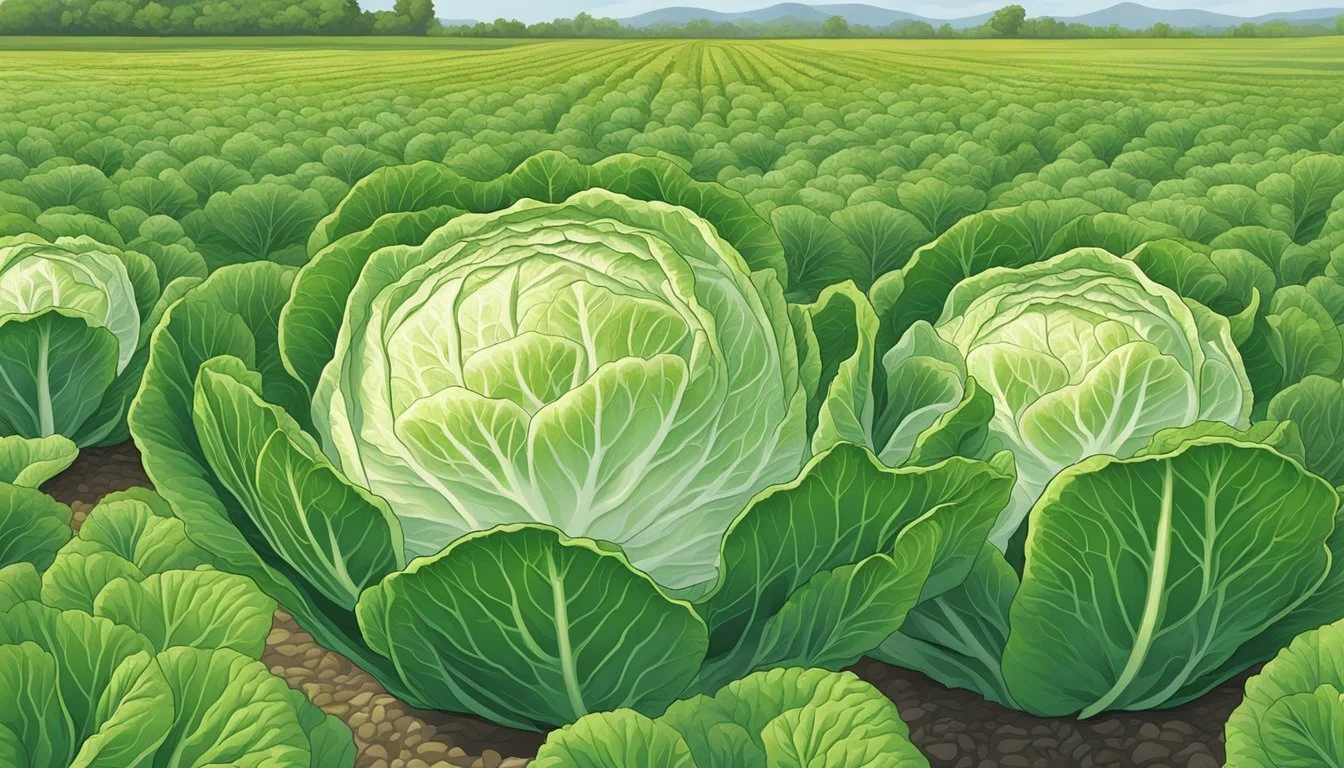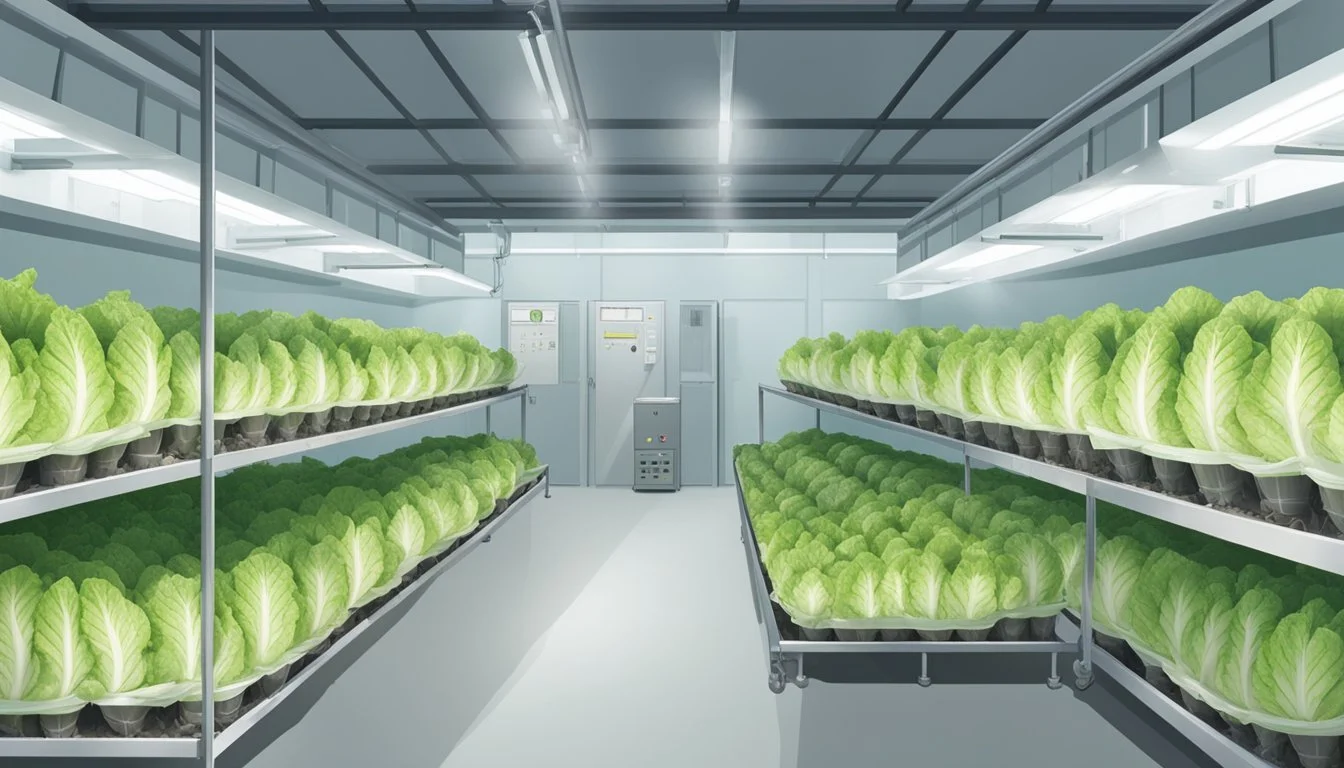Pest Control for Chinese Cabbage
Effective Strategies for Healthy Napa Cabbage Gardens
Chinese cabbage, or napa cabbage, is a leafy vegetable widely appreciated for its crisp texture and versatile use in culinary dishes. Cultivating Chinese cabbage comes with its set of challenges, predominantly those associated with pest control. Understanding the nature of pests and diseases that affect Chinese cabbage is critical for gardeners and farmers who wish to protect their crops and ensure a fruitful harvest.
Pest management for Chinese cabbage involves identifying common pests such as aphids, caterpillars, and leaf miners, all of which can cause significant damage if not controlled effectively. Implementing an integrated approach that combines organic methods like handpicking pests and using biological controls can mitigate damage to the crop. Additionally, strategies like crop rotation and the use of repellent plants can be beneficial in maintaining the health of Chinese cabbage by preventing pest infestations.
Maintaining optimum growing conditions is another vital aspect of pest control for Chinese cabbage. The vegetable thrives in cooler temperatures, between 13 and 21°C (55-70°F), which can be conducive to a healthy growth, potentially reducing the occurrence of pests. Attention to soil pH, proper spacing, and timely planting are essential factors that influence the resilience of Chinese cabbage to pests and diseases.
Understanding Chinese Cabbage
Chinese cabbage, commonly referred to as napa cabbage or Brassica rapa pekinensis, is a versatile vegetable that thrives in cooler climates. Unlike bok choy or pak choi, which are types of Chinese cabbage characterized by their green leaves and white stalks, napa cabbage is known for its elongated head and crinkly, pale green leaves.
Characteristics of Napa Cabbage:
Species: Brassica rapa
Variety: Pekinensis
Other Names: Celery cabbage, napa
Plant Type: Annual
Optimal Growing Conditions:
Temperature: Prefers cooler weather between 55-70°F (13-21°C)
Soil pH: Ideal range is 5.5 to 7.0
Sowing Depth: 0.6 inches (1.5 cm)
Napa cabbage is an annual plant, signifying it completes its lifecycle in one growing season. This leafy vegetable is not only integral in Asian cuisine but also appreciated globally for its mild, sweet flavor and high nutritional value. It's especially beneficial when it comes to creating a balanced diet, as it is low in calories yet rich in vitamins and minerals.
Napa cabbage requires well-draining soil to prevent root diseases and promote healthy growth. Its growth can be significantly impacted by pests and diseases, thus effective pest and disease management is crucial for a successful crop.
It's important to acknowledge the differences between napa and other vegetables of the Brassica genus. While similarities exist, napa cabbage's unique properties necessitate specific horticultural practices for optimal growth. Understanding these characteristics allows gardeners to cultivate napa cabbage effectively, thereby ensuring a bountiful harvest of this nutritious vegetable.
Soil Requirements and Preparation
Proper soil conditions are critical for the successful cultivation of Chinese cabbage, with soil pH and nutrient balance playing a pivotal role. Preparation should also account for soil temperature and texture to promote healthy growth.
Soil pH and Nutrient Management
Chinese cabbage flourishes in well-draining soil with a pH level between 5.5 and 7.0. It is essential to test the soil's pH and, if necessary, adjust it. For acidic soils, the application of lime can raise the pH to the desired level. To ensure a nutrient-rich environment, incorporate organic matter such as composted manure, which provides a slow-release of nutrients and enhances soil structure.
Soil Temperature and Texture
Soil temperature should be maintained for optimal germination and growth. Chinese cabbage seeds perform best in cooler conditions, with temperatures ranging between 13 and 21°C (55-70°F). The soil should be loose and fertile, promoting good air circulation around the roots. If the soil is too dense, amend it with organic material to improve texture and drainage.
Planting and Propagation
The success of growing Chinese cabbage starts with proper seed selection and continues through the stages of germination and transplanting. Temperature control is critical for seed germination and early growth, with consideration given to planting time relative to last frost dates. Suitable containers and practices for container gardening can also ensure robust plant development.
Seed Selection and Germination
When selecting seeds for Chinese cabbage, ensure they are suitable for the current season—either early spring or late summer—to avoid bolting. Germination occurs best in temperatures between 13°C to 21°C (55-70°F), with the optimal range being 15°C to 18°C (59-64°F). Plant seeds about 0.6 cm (0.25 in) deep and keep soil consistently moist to promote uniform germination.
Transplanting Seedlings
One should transplant seedlings when they reach about 5 inches in height, ensuring the last frost has passed to prevent damage. Spacing is crucial; thin seedlings to at least 30 cm (12 inches) apart, with rows 45-76 cm (18-30 inches) apart depending on variety. It's worth noting that Chinese cabbage has a sensitive root system, so handle transplants carefully to avoid shock.
Container Gardening
For those opting for container gardening, choose pots that are at least 20 cm (8 inches) deep and have good drainage. Containers should be kept in an area that matches the preferred temperature range for seed starting. Regular watering is essential as containers dry out more quickly than garden soil; however, ensure not to overwater as this can lead to root rot.
By adhering to these practices, one can propagate Chinese cabbage effectively, whether in the garden or containers.
Irrigation and Fertilization
Proper irrigation and fertilization are crucial for the health and growth of Chinese cabbage. They optimize the plant's potential, prevent common diseases, and encourage robust yields.
Watering Practices
Chinese cabbage requires consistent soil moisture to thrive. It's recommended to provide approximately 1 inch of water per week, either through rainfall or manual watering. The goal is to maintain moist but not soggy soil conditions. During periods of drought or high temperatures, additional watering may be necessary. Irrigation methods like drip systems can be particularly effective, as they deliver water directly to the roots and reduce leaf wetness, which in turn minimizes the risk of disease.
Fertilizer Use
When fertilizing Chinese cabbage, it is important to balance the needs for nitrogen, phosphorous, and potassium. A balanced fertilizer, often indicated by an equal ratio such as 10-10-10, is suitable for promoting healthy leaf growth. Apply fertilizer at planting, and then again at mid-season to support continued growth. Excessive use of fertilizer can lead to lush foliage at the expense of head formation, so careful monitoring of plant response is crucial. Organic options, such as well-composted manure, can also be incorporated into the soil prior to planting for an added nutrient boost.
Pest Management
Effective pest management for Chinese cabbage involves addressing common insect pests such as aphids, flea beetles, and cabbage loopers. Strategies range from organic methods to the careful use of chemicals, aiming to protect these vegetables while minimizing environmental impact.
Dealing with Insects
Aphids and flea beetles can be a major concern for Chinese cabbage. They not only damage the leaves but can also hinder the overall growth of the plant. A combination of floating row covers can be used to physically block access to the plants. Insecticidal soaps are another option, particularly effective against aphids by breaking down their protective exterior.
Cabbage worms and cutworms can be controlled using bacillus thuringiensis, a naturally occurring soil bacterium that is lethal to certain insects while being safe for humans and beneficial insects.
For tougher pests like cabbage loopers, applying diatomaceous earth around the base of the plants can help, as it cuts and dehydrates the insects.
Natural Predators and Biological Controls
Introducing predators such as ladybugs and lacewings plays a crucial role in controlling aphids naturally. These predators can be attracted to the garden by planting compatible flowers or can be purchased and released directly into the affected area.
Using bacillus thuringiensis represents a biological control measure that targets specific larvae while leaving other insects unharmed. This naturally occurring bacterium is ingested by the larvae, causing them to stop eating and die within days.
Chemical Pesticides and Organic Options
When the infestation is severe, chemical pesticides might be considered. It's important to use these as a last resort and to follow the instructions carefully to avoid harming non-target organisms and the environment.
For a more eco-friendly approach:
Neem oil acts as both a pesticide and a fungicide. It disrupts the life cycle of pests, deterring them from feeding and laying eggs on the plants.
Organic options like insecticidal soaps and neem oil are preferable for minor infestations and are effective against a wide range of insect pests.
In managing pests on Chinese cabbage, one must consider the whole ecosystem, employing a variety of methods to keep pest populations under control while also maintaining the integrity of the crop and the environment.
Disease Prevention and Control
Effective management of diseases in Chinese cabbage is crucial for a healthy harvest. This section delves into the specifics of disease identification and the various strategies for prevention and control, encompassing chemical solutions and practical cultural practices.
Common Diseases of Chinese Cabbage
Chinese cabbage is susceptible to several diseases caused by fungi, bacteria, and viruses. Black rot (Xanthomonas campestris), characterized by V-shaped lesions on leaves, is a serious bacterial disease. Clubroot (Plasmodiophora brassicae) leads to swollen roots and wilting plants. Fungal diseases include Alternaria leaf spot, Phoma lingam (responsible for blackleg), Rhizoctonia solani (causing bottom rot), Powdery mildew, and White mold (Sclerotinia sclerotiorum). Downy mildew, another common issue, thrives in damp weather conditions.
Fungicide and Bactericide Use
The careful use of fungicides and bactericides can help control the spread of pathogens. However, for these to be effective, the specific cause of disease must be correctly identified. Fungicides address fungal diseases such as powdery mildew and blackleg, while bactericides are used to combat bacterial soft rot and black rot. It is important to follow the manufacturer's guidelines closely when using these chemicals to ensure safety and effectiveness.
Cultural Practices for Disease Management
Cultural practices play a significant role in disease prevention and management:
Crop Rotations: Rotating cabbages with non-host plants every two to three years minimizes the persistence of disease-causing organisms.
Sanitation Practices: Regularly removing plant debris and disinfecting tools reduce disease spread.
Soil Health: Planting cabbages in well-draining soil with appropriate pH levels typically between 5.5 and 7.0 deters diseases like clubroot.
Watering and Weather Monitoring: Avoiding overhead irrigation and planting in optimal weather conditions can decrease the incidence of diseases like downy mildew.
Maturity and Bolting: Timely harvest before cabbages reach full maturity can prevent bolting, making them less vulnerable to pathogens.
Adherence to these practices contributes to maintaining healthy Chinese cabbage crops by limiting the conditions favorable for disease development.
Harvesting Strategies
Harvesting Chinese cabbage at the right time using proper techniques ensures maximum yield and quality. The cabbage should be firm, reach a desirable size, and have a sweet flavor profile that indicates maturity.
Identifying Maturity and Harvest Timing
The key to harvesting Chinese cabbage—or napa cabbage—is recognizing when it has reached full maturity. One can discern maturity by observing the size of the cabbage and by testing how firm the head feels. Typically, a mature napa cabbage head should be dense with little give when gently squeezed. The timing is crucial, as harvesting too early can yield underdeveloped heads, while harvesting too late can result in over-maturity, potentially affecting the cabbage's mild, sweet flavor and crisp texture. To ascertain the optimal harvest time, one starts examining the heads roughly 70 days after sprouting.
Harvesting Techniques
When the Chinese cabbage is ready to harvest, the technique used can influence the quality of the produce. To harvest, use a sharp knife to cleanly cut the cabbage head at the base. It is important to handle the cabbage heads gently to prevent bruising, which can affect the cabbage's storage life and quality.
Ensure: Use clean cuts to prevent damage to the plant.
Avoid: Twisting or pulling the cabbage, as this can damage the root system and the surrounding plants.
By adhering to these harvesting strategies, growers can secure a successful harvest of Chinese cabbage that is fresh, flavorful, and ready for consumption or market.
Post-Harvest Handling
After harvest, proper handling of Napa cabbage is crucial to maintain its quality and prolong shelf life. Attention to storage conditions and methods to extend shelf life ensures that Napa cabbage retains its texture and nutritional value.
Storage Conditions
Napa cabbage should be stored at a temperature of 0 to 1°C (32-34°F) and a relative humidity of 95-100%. These conditions help to minimize the respiration rate of the cabbage and reduce moisture loss. For optimal storage, the environment must be well-ventilated to prevent the accumulation of ethylene gas, which can accelerate spoilage.
Temperature: Optimal at 0-1°C
Humidity: High, at 95-100%
Ventilation: Crucial to avoid ethylene buildup
It's important to cover the cabbage with perforated plastic film to retain moisture, as this will also help to prevent wilting. A well-draining soil during cultivation and the application of mulch can contribute to a cleaner harvest, reducing the potential for spoilage from soil-born pathogens.
Extending Shelf Life
To extend the post-harvest life of Napa cabbage, rapid cooling after harvest is essential. The process known as "cold chain management," starting from the field to storage, is key to maintaining quality. Quick removal of field heat prolongs freshness and delays senescence.
A list of practices to extend Napa cabbage's shelf life:
Pre-cool immediately after harvest to remove field heat.
Maintain unbroken cold chain from field to storage.
Monitor the storage conditions regularly.
Using compatible storage partners that do not emit significant amounts of ethylene, such as apples or tomatoes, is also advised since ethylene-sensitive vegetables like Napa cabbage can deteriorate more quickly when exposed to this gas. Regular inspection of stored cabbage can help in identifying and removing spoiled or damaged produce, further extending the overall shelf life of the batch.
Cultural Considerations
Cultural practices play a pivotal role in managing the health and yield of Chinese cabbage. Implementing strategies such as crop rotation and companion planting can significantly mitigate pest problems and boost crop performance.
Crop Rotation
Crop rotation is fundamental in breaking the lifecycle of pests and diseases. It is recommended to rotate Chinese cabbage and other Brassicaceae (cole crops) by planting them in different locations each year. This practice helps in preventing the build-up of soil-borne pathogens like Xanthomonas campestris pv. campestris, which can cause black rot in cabbage. By rotating with non-cruciferous crops, growers also reduce the risk of harboring cruciferous weeds, which can serve as alternative hosts for pests and diseases.
Interplanting and Companion Planting
Interplanting and companion planting are efficient techniques for pest management in Chinese cabbage cultivation. Interspersing cole crops with other plant types can create a diversified ecosystem that supports beneficial insects and reduces pest outbreaks. For example, interplanting with aromatic herbs can deter pests with strong scents. Companion planting with flowers like marigolds may also attract natural predators that feed on pests affecting Chinese cabbage. These strategies, alongside proper timing to avoid bolting, help maintain a healthy cabbage crop.
Growth Challenges
Growing Chinese cabbage can be quite rewarding, but it also comes with a set of challenges that can impede the growth and yield of the crop. Gardeners must be vigilant about weather shifts and soil health to ensure a successful harvest.
Weather and Environmental Stressors
Climate plays a pivotal role in the cultivation of Chinese cabbage. This crop thrives in cool temperatures, particularly between 13 and 21°C (55-70°F), and requires consistent conditions to prevent stress. A significant challenge is bolting, a process where the plant prematurely goes to seed, generally induced by temperatures dipping to between 35 and 50 degrees Fahrenheit for an extended period. Bolting can ruin the quality of the cabbage, making it important to time the planting after the last frost and to shield the crops from unexpected cold snaps.
Nutrient Deficiency and Soil Issues
Nutrient balance and soil quality are crucial for the dense heads and delicate leaves of Chinese cabbage. Soil should be well-drained and maintain a pH between 5.5 and 7.0 to prevent nutrient lockout, which can stunt growth. For instance, a sulfur deficiency can manifest as pale leaves and thin stems, undermining the robustness of the plant. Moreover, if the soil is compact and not aerated, the crop’s roots may not develop adequately, leading to less dense foliage and weakening the overall constitution of the plant. Regular soil testing and amendments can help mitigate these issues.
Frequently Asked Questions
In addressing pest control for Chinese cabbage, it's essential to understand both identification of common pests and effective strategies for their management.
How can I identify and control common pests found in Chinese cabbage?
Common pests in Chinese cabbage include aphids, flea beetles, and diamondback moths. Control methods vary; aphids can be treated with insecticidal soaps, while flea beetles may require floating row covers for protection.
What are natural methods to prevent pest infestations in Napa cabbage?
To naturally prevent pests, encourage beneficial insects that prey on them, such as ladybugs for aphids. Crop rotation and proper plant spacing can reduce the risk of infestation.
What are the symptoms of bacterial leaf spot in Chinese cabbage, and how is it controlled?
Bacterial leaf spot appears as small, dark lesions on leaves. Control includes using disease-free seeds and applying copper-based fungicides as a preventive measure.
Which herbicides are safe and effective to use on Chinese cabbage crops?
Herbicides labeled for use on Chinese cabbage and not harmful to the crop can be used. Always follow the manufacturer's instructions for application rates and timings.
How can I distinguish if my Napa cabbage has gone bad or is suffering from pest damage?
Cabbage that has gone bad typically emits an unpleasant odor and has slimy leaves, while pest damage often presents as holes or chewed foliage.
What are the best practices for preventing bugs from eating cabbage plants?
Best practices include regularly inspecting plants for early signs of damage, maintaining a healthy crop through adequate watering and fertilization, and using barriers such as netting or row covers to physically prevent pests from reaching the cabbage.








